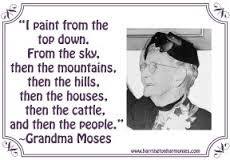Wayne Dyer's last
book (written with Dee Garnes) “Memories of Heaven:Children's Astounding Recollections of the Time before They Came to Earth,” has so much behind it that I
felt overwhelmed by the time I finished reading it this morning.
The authors
explicitly built it around Wordsworth's Ode: Intimations of Immortality from Recollections of Early Childhood,
collecting thousands of anecdotes via their Facebook appeal for
accounts of young (mostly under five) children's memories and visions
of heaven. Dyer and Garnes then made a selection of those accounts,
wrote them up and present them in this astonishing book.
We are all pretty
much familiar with the main points of such accounts - the heavens of
light and love, loved ones who have gone on, angels, choosing one's parents-to-be, etc. – and it would be easy to say as many do, “OK, we've heard this all
before, there's no proof, it's all wishful thinking or fraud, it's
all so simplistic and naive and childlike and dangerously
unrealistic.”
I think it's
as equally dishonest just to dismiss these accounts as it is to believe them uncritically. These children's reports may well be true and the
materialistic scientist's view untrue.
The “a-ha,” the
“click,” the “eureka,” that sense of opening and solution and
release that comes with discovery, seems to be part of the scientist's
experience as well as the non-scientist's experience. It's certainly one of the
acid tests of when you've finally discerned what a
dream is trying to tell you.
Dyer and Garnes like
good quotes, from poets as well as scientists, and here are two of
them from the book with which you may feel that “click:”
p.195, Albert
Einstein:
“If you want your children to be intelligent, read them fairy
tales. If you want them to be more intelligent, read them more fairy
tales.”
p.198, William Blake:
Said 'Little
creature, form'd of joy and mirth
Go, love without
the help of anything on Earth.”




